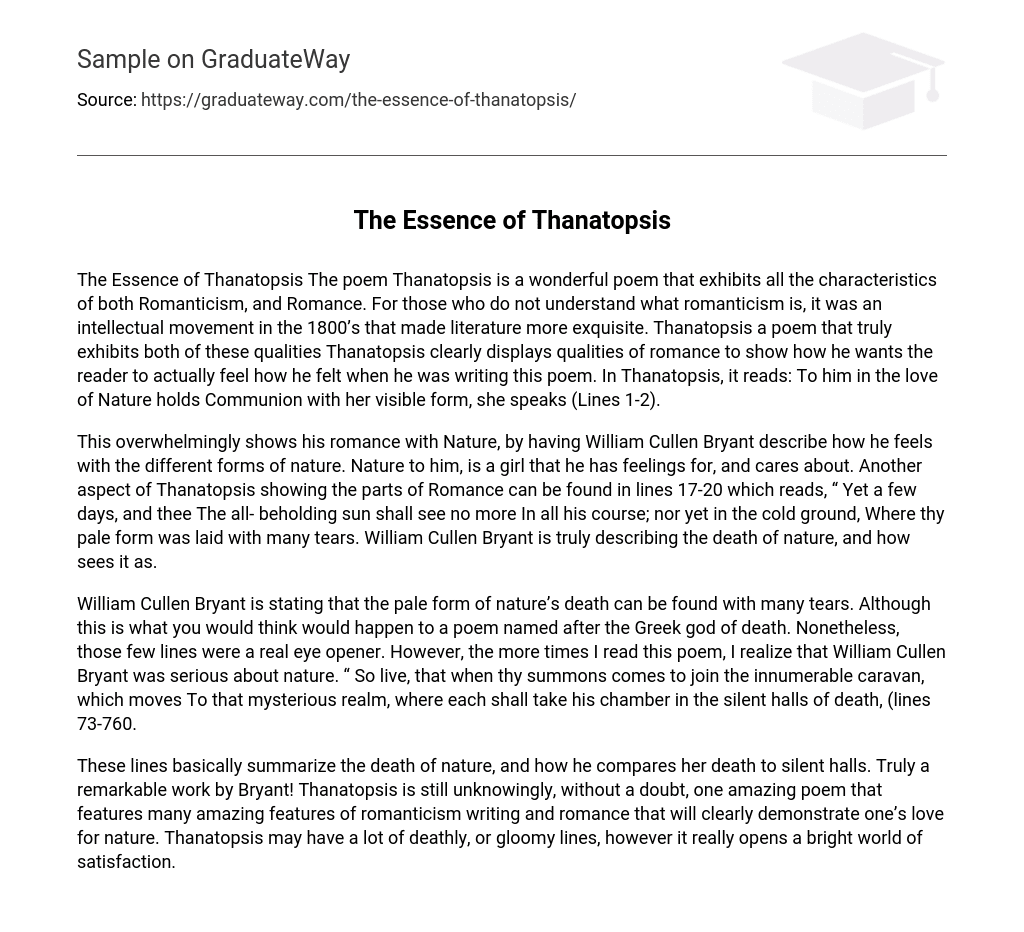The poem Thanatopsis exemplifies the elements of both Romanticism and Romance. This intellectual movement in the 1800s aimed to enhance the beauty of literature. Thanatopsis, a poem that beautifully embodies these qualities, allows the reader to experience the emotions of the author during its creation. Within Thanatopsis, it states: “To him who in the love of Nature holds Communion with her visible form, she speaks” (Lines 1-2).
William Cullen Bryant’s romance with Nature is evident throughout Thanatopsis, as he describes his deep connection with the various aspects of the natural world. He personifies Nature as a beloved girl whom he cares deeply for. The poem also explores the theme of love and romance in lines 17-20, where it speaks of the inevitable demise of nature and how it will no longer be seen by the sun or lie in the cold ground, where it was mourned and laid to rest. Bryant vividly portrays the death of nature and his perception of it.
William Cullen Bryant suggests that the sorrowful aspect of nature’s demise can be observed through numerous tears. This is an expected theme for a poem titled after the Greek god of death. Nevertheless, these few lines greatly impacted me. Subsequently, upon further examination of this poem, I comprehended Bryant’s genuine devotion to nature. He urges us to live our lives in a way that when the time comes for us to join the countless procession towards the enigmatic realm of death, each of us will find our place in the tranquil chambers of eternity (lines 73-76).
In essence, this passage encapsulates the portrayal of nature’s demise and its comparison to quiet corridors. Undeniably, Bryant’s work in Thanatopsis is a remarkable poem that showcases various aspects of Romantic writing and an undeniable affection for the natural world. Despite the presence of many melancholic and mournful verses, Thanatopsis ultimately unveils a luminous realm of contentment.





